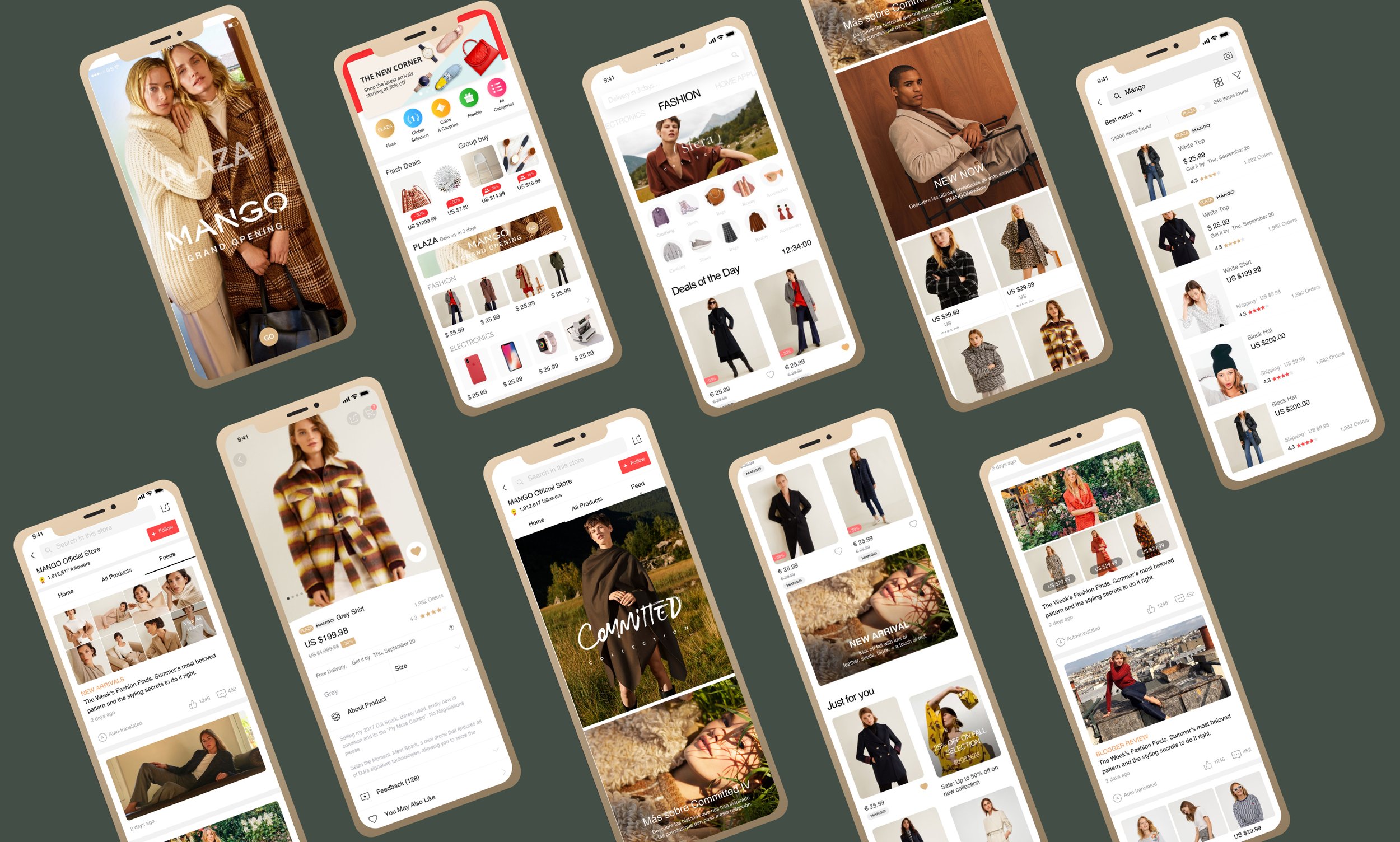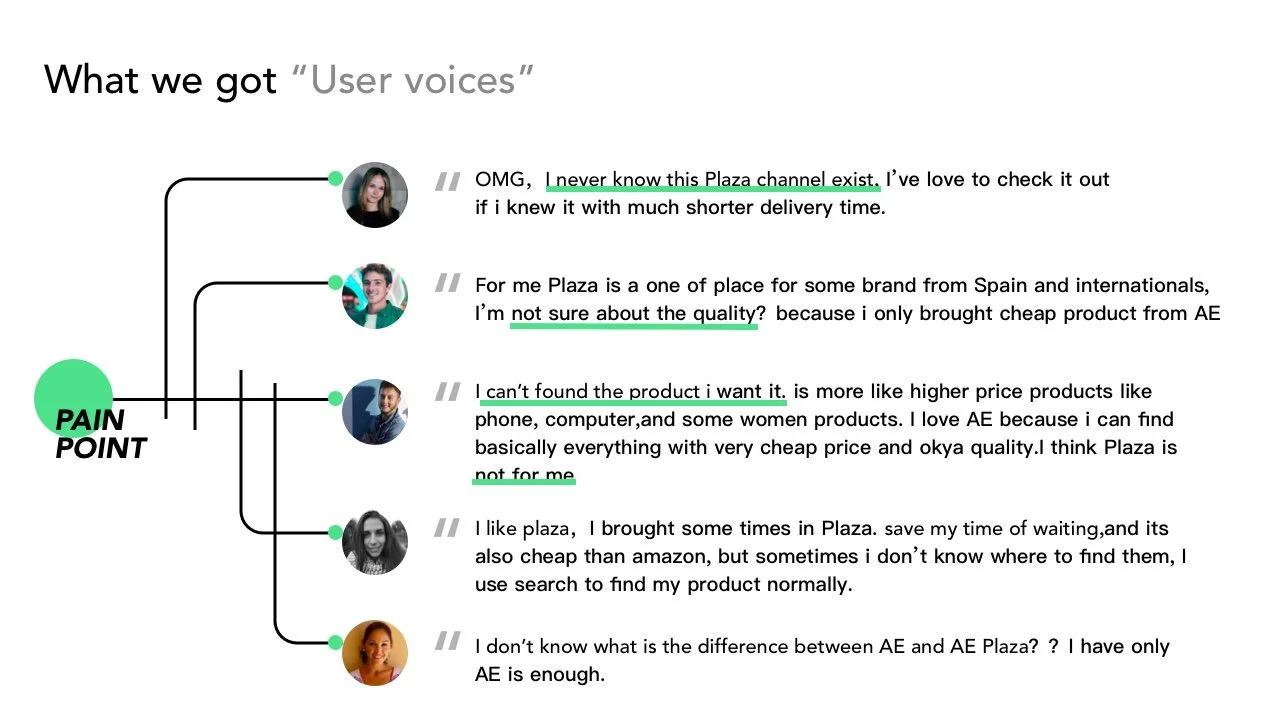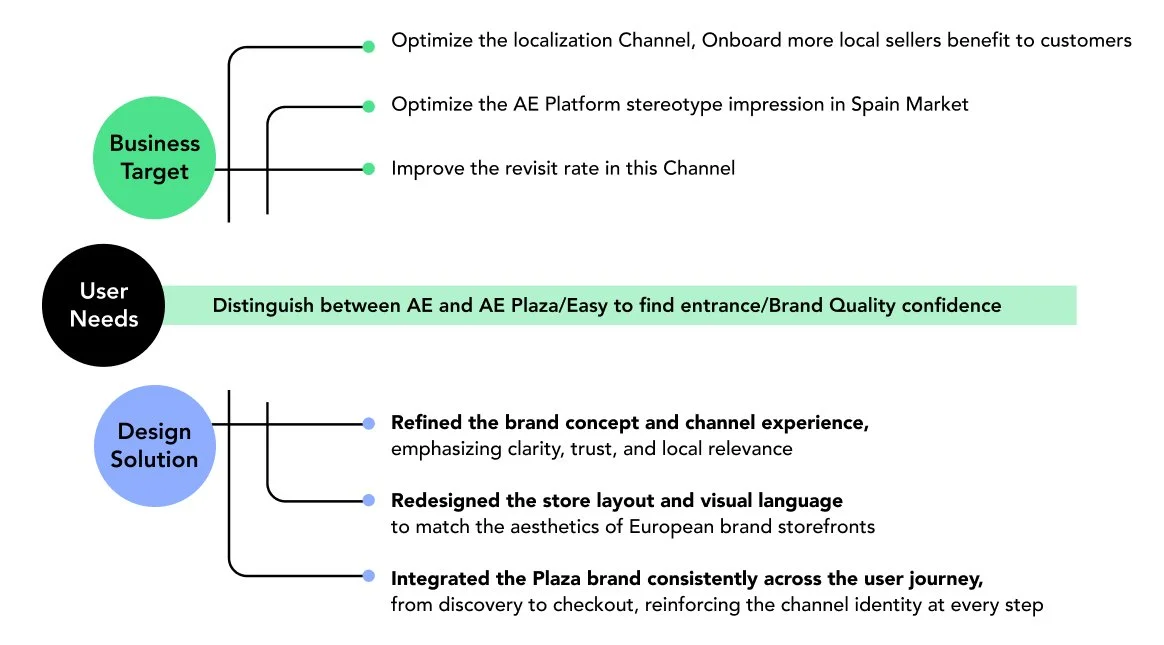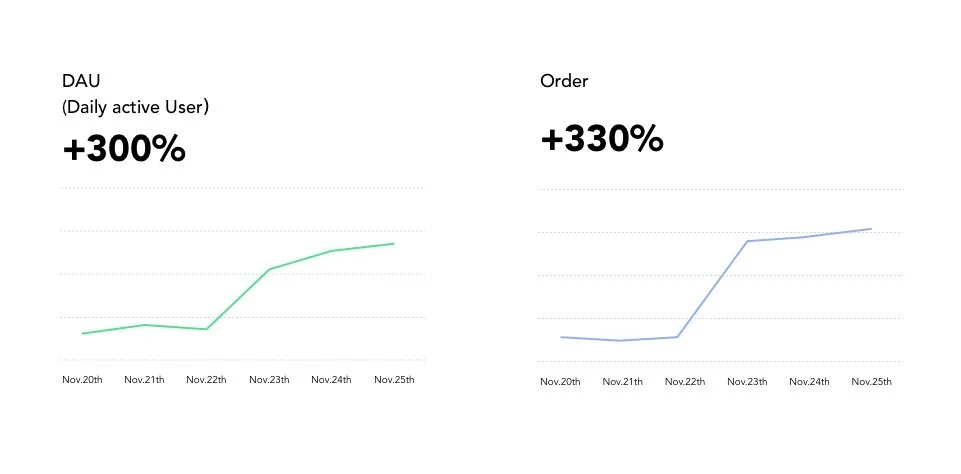AliExpress PLAZA Localization & Rebrand

Overview
Plaza was introduced to elevate how Spanish users perceive and experience AliExpress — shifting from a purely price-driven platform to one that feels curated, local, and trustworthy.
Evolving from an underutilized local section, Plaza became a dedicated space for Spanish users, featuring faster local delivery, curated selections, and stronger brand presence.
The result: +300% DAU growth, +330% increase in orders, and a significant lift in user retention.
My Role
As Design Lead, I shaped the end-to-end experience strategy for Plaza — from early positioning to full execution.
Aligned with product and brand leads on project vision and user priorities
Led research and co-creation to define key scenarios
Delivered a full user journey experience,Built a modular UI system to support scalable, seasonal operations
Coordinated cross-functional delivery across product, tech, BD, and content teams
Key Challenges
Brand perception: The platform lacked trust and quality cues, limiting user interest in local or branded content.
Emotional disconnect: The experience felt generic — no relevance, lifestyle context, or sense of curation.
Missing local cues: Limited visibility of Spanish brands, unclear delivery info, and weak language adaptation.
Delivery doubt: Local stock existed, but the value of faster logistics wasn’t clearly surfaced to users.
Design Process
User Interview and research
Opportunity Framing
Design Ideation & Co-creation
UX Flow Mapping
Design Execution Highlights
Impact & Learnings

User Interview
To uncover users’ mental model of AliExpress, perceptions of Plaza, brand trust levels, and how they define “local” in online shopping, we conducted 1-on-1 interviews with Spanish users.
Design Ideation & Co-creation
To turn insights into action, we mapped user stories and audited key page journeys to surface core friction points.
We shared findings in a collaborative canvas to align on priorities and reframe KPIs from both user and business perspectives.
User Insights & Strategic Alignment
User research and co-creation revealed three key gaps:
Low awareness — users didn’t know Plaza existed or how to access it.
Limited trust — doubts about product quality and credibility
Unclear value — Plaza felt no different from the rest of AliExpress
At the core, Plaza’s value and positioning weren’t clearly communicated. I synthesized these insights into a shared design direction — aligning teams around a unified goal to build a more trusted, localized experience.
I used the user flow to clarify the journey, map pain points, and highlight key touchpoints and opportunities — ensuring no critical moment was overlooked.
Design Execution
1.Refined the brand concept and channel experience
Emphasizing clarity, trust, and more premium
To elevate Plaza’s identity and align with Western e-commerce expectations, I introduced a more editorial and minimalist visual system — with refined typography, increased white space, and reduced clutter to build trust and clarity across the journey.
2. Integrated the Plaza brand consistently across the user journey
I reinforced Plaza’s value from discovery to checkout — adding “local” and “fast shipping” tags, prioritizing Plaza sellers in search, and redesigning PDPs to highlight trust signals like delivery, service, and returns.
3.Redesigned the store layout and visual language
To reflect the tone of European brands like Mango and Apple, we built a more spacious, visually refined layout. We also developed flexible templates, enabling merchants to adapt storefronts to their unique brand voice and promotional needs.
Before & After(prototype)
Impact & Metrics
Learnings
this project reminded me that trust isn’t just a message — it’s a system. Every design detail contributes to how users feel, especially in unfamiliar markets.
Rebranding Plaza wasn’t just visual work — it was about building clarity, credibility, and local relevance through experience.
It also reinforced the power of cross-functional collaboration when strategy and design truly align.
Above all, it strengthened my ability to balance user needs and business goals across markets — something I carry into every strategic product decision.








